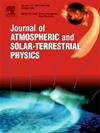全球SF6排放管理系统SARIMA、LSTM和GRU模型的时间序列对比分析
IF 1.8
4区 地球科学
Q3 GEOCHEMISTRY & GEOPHYSICS
Journal of Atmospheric and Solar-Terrestrial Physics
Pub Date : 2024-12-01
DOI:10.1016/j.jastp.2024.106393
引用次数: 0
摘要
为了维持大气的平衡,温室气体排放量的变化必须得到控制。为了在这方面建立管理制度和采取前瞻性步骤,目前除了预测模型之外没有具体的数据。通过比较多种方法,可以更好地理解预测方法的成功。本研究利用季节自回归综合移动平均模型(SARIMA)、长短期记忆神经网络(LSTM)和门控循环单元(GRU)预测模型估算了大气中六氟化硫气体(SF6)排放的变化,并比较了它们的精度。关注1998年之间的月度SF6排放值;2023年,进行时间序列分析,预测未来的排放数据。用R2、RMSE、NSE、MAE和MAPE%等性能指标对实际值和预测结果进行比较和评价。这项研究的结果突出了SF6排放的持续上升趋势,并预测到2050年排放水平可能比目前的水平增加一倍左右。在分析过程中,这三种方法在估计全球SF6气体排放量方面都表现良好。LSTM模型总体上优于SARIMA和GRU模型,MAPE(0.003%)、MAE(0.0003)、RMSE(0.0003)和R2(1)值最低。它也表现出非常高的预测成功率,NSE值为0.9991。因此,确定了该方法是误差最小、最合适的估计方法。本研究的目的是为减少SF6排放的策略做出科学贡献。本文章由计算机程序翻译,如有差异,请以英文原文为准。
Comparative time series analysis of SARIMA, LSTM, and GRU models for global SF6 emission management system
To maintain the balance of the atmosphere, the amount of change in greenhouse gas emissions must be under control. In order to create a management system and take forward-looking steps in this regard, there is no concrete data other than prediction models today. The success of prediction methods is better understood by comparing multiple methods. This research estimates the changes in the emissions of Sulfur Hexafluoride gas (SF6) in the atmosphere using Seasonal Autoregressive Integrated Moving Average Model (SARIMA), Long-Short Term Memory Neural Network (LSTM) and Gated Recurrent Unit (GRU) forecast models and compares their accuracies. Focusing on monthly SF6 emission values Between 1998; 2023, time series analysis was performed to predict future emission figures. The actual values and forecast results were compared and evaluated with performance criteria such as R2, RMSE, NSE, MAE and MAPE%. The findings of this research highlight a continuous upward trend in SF6 emissions and project that emission levels could approximately double from current levels by 2050. During the analysis process, all three methods performed well in estimating global SF6 gas emissions. The LSTM model generally outperformed SARIMA and GRU models, having the lowest MAPE (0.003%), MAE (0.0003), RMSE (0.0003), and R2 (1) values. It also exhibited very high predictive success with an NSE value of 0.9991. Therefore, it was determined to be the most suitable estimation method with the least error. The aim of this study is to contribute scientifically to the reduction strategies of SF6 emissions.
求助全文
通过发布文献求助,成功后即可免费获取论文全文。
去求助
来源期刊

Journal of Atmospheric and Solar-Terrestrial Physics
地学-地球化学与地球物理
CiteScore
4.10
自引率
5.30%
发文量
95
审稿时长
6 months
期刊介绍:
The Journal of Atmospheric and Solar-Terrestrial Physics (JASTP) is an international journal concerned with the inter-disciplinary science of the Earth''s atmospheric and space environment, especially the highly varied and highly variable physical phenomena that occur in this natural laboratory and the processes that couple them.
The journal covers the physical processes operating in the troposphere, stratosphere, mesosphere, thermosphere, ionosphere, magnetosphere, the Sun, interplanetary medium, and heliosphere. Phenomena occurring in other "spheres", solar influences on climate, and supporting laboratory measurements are also considered. The journal deals especially with the coupling between the different regions.
Solar flares, coronal mass ejections, and other energetic events on the Sun create interesting and important perturbations in the near-Earth space environment. The physics of such "space weather" is central to the Journal of Atmospheric and Solar-Terrestrial Physics and the journal welcomes papers that lead in the direction of a predictive understanding of the coupled system. Regarding the upper atmosphere, the subjects of aeronomy, geomagnetism and geoelectricity, auroral phenomena, radio wave propagation, and plasma instabilities, are examples within the broad field of solar-terrestrial physics which emphasise the energy exchange between the solar wind, the magnetospheric and ionospheric plasmas, and the neutral gas. In the lower atmosphere, topics covered range from mesoscale to global scale dynamics, to atmospheric electricity, lightning and its effects, and to anthropogenic changes.
 求助内容:
求助内容: 应助结果提醒方式:
应助结果提醒方式:


